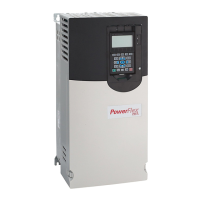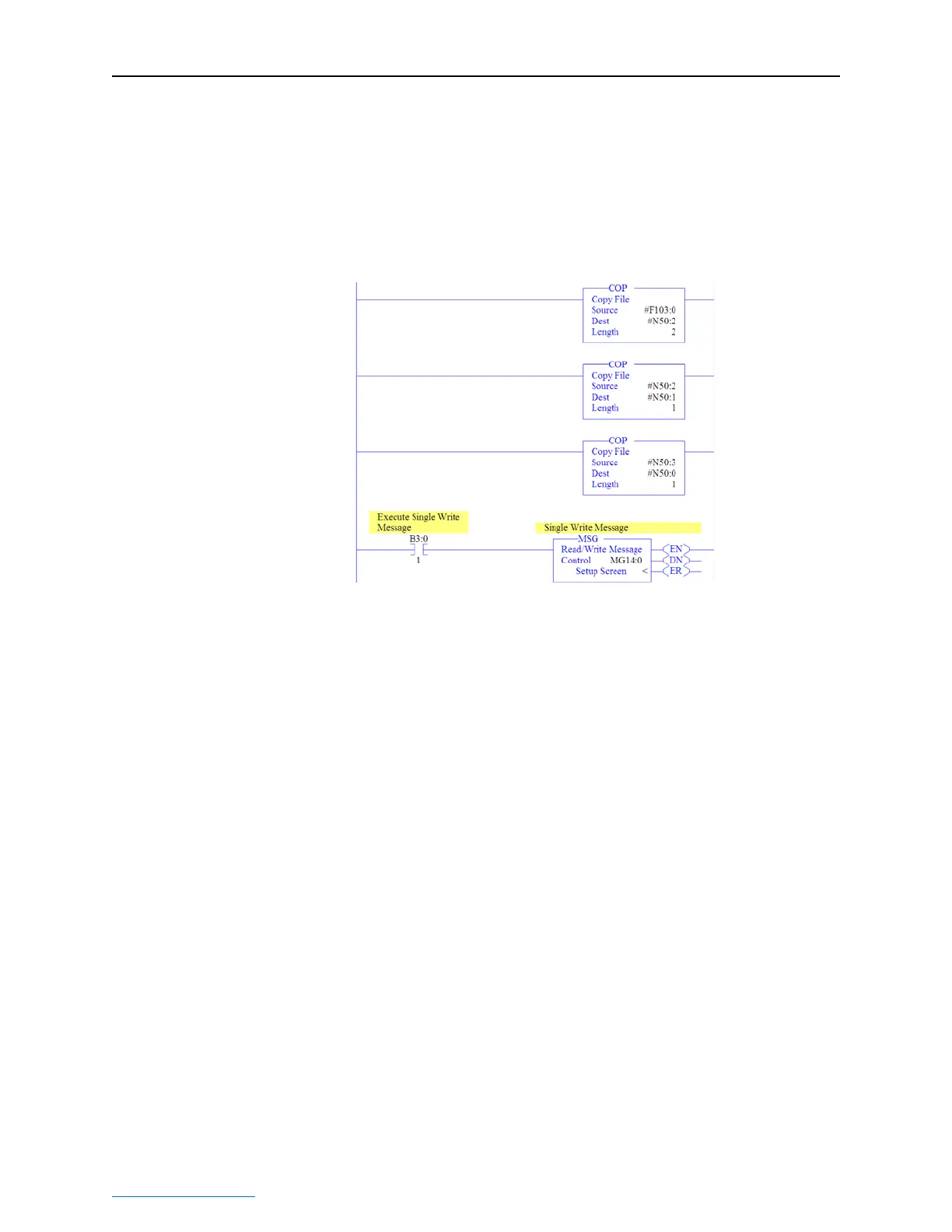6-16 Using Explicit Messaging
PowerFlex® 755 Drive Embedded EtherNet/IP Adapter User Manual
Publication 750COM-UM001A-EN-P
PLC-5 Example Ladder Logic Program to Write Single Parameter
A Generic Set Attribute Single message is used to write to a single
parameter. This write message example writes a value to the 32-bit
REAL (floating point) parameter 535 - [Accel Time 1] in a PowerFlex
750-Series drive.
Figure 6.18 Example Ladder Logic Explicit Messaging Program for Write Single
Three COP (Copy) instructions are required to convert the 16-bit integer
data table addresses N50:0 (Least Significant Word) and N50:1 (Most
Significant Word) to a 32-bit REAL (floating point) data table address
F103:0 for correct presentation. The first COP instruction correctly
writes the 32-bit REAL (floating point) value. The second and third
COP instructions swap the LSW and MSW.

